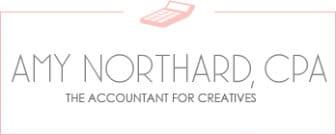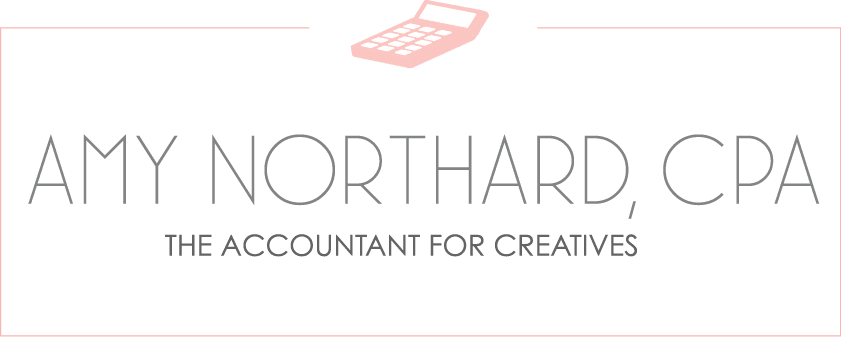We recently talked about how to make sure you’re charging enough for your goods and services so that they’re actually earning you a profit—but that will only get you so far in determining whether your business is financially sustainable in the long run.
Sure, it’s good to know that everything you sell has a net positive. But once you take into account all the expenses required to run your business, are you still taking home a decent income?
That’s where understanding your income statement comes into play. Also called a profit and loss statement, an income statement shows your business’ revenue and expenses over a course of time, like a month, a quarter, or a year. As a creative entrepreneur, you’ll want to understand how to read one so you can understand if your business is growing, and if not, what might be getting in the way.
So, let’s say Stephanie owns a photography business, and this is her income statement for Q1:
| Income Statement – Q1 | |
|---|---|
| Revenue | |
| Sales | $20,000 |
| Cost of Goods Sold | ($5,000) |
| Gross Profit | $15,000 |
| Operating Expenses | |
| Rent | $1,500 |
| Insurance | $1,200 |
| Contractors | $3,000 |
| Marketing | $600 |
| Supplies & Software | $300 |
| Total Operating Expenses | $6,600 |
| Net Income | $8,400 |
This tells us a lot of information about Stephanie’s business. First up, there’s the gross profit, which is calculated by tallying up sales for that period of time, and subtracting cost of goods sold (or how much it costs to produce those products or services). For Stephanie, that means subtracting things like travel costs to get to shoots. A potter would include all of the raw materials that go into each piece. A freelance writer might have no cost of goods sold since producing your work often just involves typing a document on your computer!
Next, there’s a rundown of regular operating expenses involved with running the business. These are administrative costs that aren’t directly tied to the production of your goods or services, but are important to keeping your business going. Stephanie deducts the day-to-day expenses like (rent for her co-working space, her part-time personal assistant, her photoshop subscription and project management software), as well as costs required for customer acquisition (paying for social media ads or purchasing a booth at a trade show).
Finally, the total expenses are subtracted from the gross profit to give the net income for the given time period.
Let’s say Stephanie had an unexpected or unusual expense one quarter—like a massive computer purchase that only happens once every four years, or a client that sued her and required she consult a lawyer. Her income statement may have an additional section for non-operating expenses (like below), and her operating income (how much she made before the odd expense) is shown separately from her net income (how much she ended up making). This should help prevent panic; if your income is especially low one period, you can clearly see that it was from a one-off expense, not a deeper issue with your sales or regular spending.
| Income Statement – Q1 | |
|---|---|
| Revenue | |
| Sales | $20,000 |
| Cost of Goods Sold | ($5,000) |
| Gross Profit | $15,000 |
| Operating Expenses | |
| Rent | $1,500 |
| Insurance | $1,200 |
| Contractors | $3,000 |
| Marketing | $600 |
| Supplies & Software | $300 |
| Total Operating Expenses | $6,600 |
| Operating Income | $8,400 |
| Non-Operating Expenses | |
| New Laptop | $3,000 |
| Total Non-Operating Expenses | $3,000 |
| Net Income | $5,400 |
Looking over your income statement gives you a good snapshot of a few things. First, it tells you exactly how much you’ll see in your bank account when all is said and done, allowing you to determine if you’re really making enough to survive. If Stephanie continued earning and spending about the same for the rest of the year, she’d make a healthy $60K in profits—but only end up with $33K after expenses.
If that’s not enough for you to live on, an income statement helps you quickly dig into what the problem might be. Where are the biggest expenses, and how might you be able to cut them down? Are your expenses actually pretty low—but you’re just not bringing in enough profit to make up for them? How can you up your sales to improve that?
Finally, looking at your income statements regularly—like every quarter—lets you see whether your income is growing, shrinking, or staying the same over time.
Income statements may look simple, but they’re a powerful tool in understanding the financial status of your creative business. If you’re not already, start paying attention to yours today, and make sure to check in regularly to see if you’re moving in the right direction!
Abridged by Amy
- An income statement clearly and simply breaks down your sales, cost of goods sold, and expenses over a given period of time
- Gross profit = sales – cost of goods sold
- Operating income = gross profit – normal business expenses
- Net income = operating income – any unusual business expenses
- Reading your income statement can help you get to the root cause of any financial problems your business is having
- Looking at your financial statement over time can help you assess your growth trajectory

